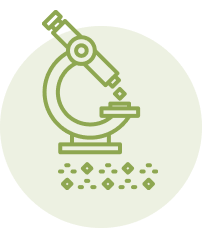Lawn care needs in summer vary based on the type of lawn, with distinct differences between cool season lawns and warm season lawns.
Summer Fertilization Keys
- Cool season grasses generally do not need fertilization in summer. Instead of fertilizer, Earth Science Fast Acting Iron® can provide a green-up to summer lawns without stimulating growth.
- Warm season grasses benefit from summer fertilization, as they actively grow during the summer season. Make one or two fertilizer applications in summer for warm season grasses, using a maximum of 0.8 pounds of nitrogen per thousand square feet of lawn.
Summer Watering Keys
Proper watering is a key to optimal lawn care. Both the timing of irrigation and the amount of water applied are key factors in proper lawn watering.
- Water during morning hours (before 10 AM) to reduce water loss through evaporation.
- Avoid watering in the evenings, as wet grass during nighttime hours can promote disease infection.
- In general, lawns require 1 inch of water per week. In weeks where rainfall provides an inch of water, additional irrigation is not needed.
- Water enough to wet the soil deeply when irrigation is needed, once or twice a week. Frequent, shallow can reduce deep root growth and make grass less drought tolerant.
- Browning of cool season grass lawns during periods of severe heat and drought is normal. The grass will naturally stop growing and enter a period of dormancy. Cool season lawns can typically tolerate up to a month of dormancy, returning to active growth when drought ends.
Summer Mowing Keys
- The two two keys to proper mowing, regardless of the type of grass, are the height of the grass after mowing and the length of the leaf blades removed when mowing.
- Mow so that no more than one third of the total leaf blade length is removed in a single mowing.
- Grass height after mowing varies with the type of grass grown.
- Lawns with cool season grasses are best mowed to a height of 2 ½ to 3 inches minimum.
- Warm season grass heights after mowing should generally be 2 to 2 ½ inches tall.
- In shaded areas, mow to the tallest recommended mowing height.
- Lawn mower maintenance is an important part of proper mowing. Sharp mower blades cut grass blades cleanly, and clean cuts are less stressful to grass.



